So before I start this dining review, I wanted to preface it with a little change I'm making to my posts from now on. I was given some enlightening advice from Alice a few months back, after having a conversation on ways to improve one's blog. One of the things that she admires in a great blog are ones with solid photographs (no surprise given her expertise as a freelance photographer!), including not only basic things like composition and lighting, but also size. She pointed out an important thing that she commits to doing at Lingered Upon, her own blog, is including photographs with a greater resolution, so that her readers can enjoy the content at more ease. Anyways, I decided to take that advice to heart (thanks, Alice!), so the photographs at Four Tines will be appear a little bit larger now, so please enjoy!
A couple weekends ago, Lisa and I finally decided to check out Sushi Azabu over in Tribeca, housed inside one of our favorite spots, Greenwich Grill -- a bistro specializing in, believe it or not, Japanese-Italian fused cuisine. We made it an evening date of a "dinner and a movie" where we planned to go to the Independent Film Channel Center right after dinner to see the documentary, Jiro Dreams of Sushi (more on this later!).

I arrived a little early, so I waited at the bar, admiring the inspired décor of Greenwich Grill -- exposed brick, burgundy-upholstered curved banquettes, warm lighting, and large canvases of Japanese art and calligraphy sprawled on the walls.
I began the evening with the summer punch -- a concoction of vodka, peach, pineapple, orange juice and Prosecco. Lucky for me (and unfortunately for the rest of the evening's guests), it was the last one available from the bar. It was refreshing and deliciously fruity -- just the right balance of spirit and juice.
Loving the lamp placed in the corner here -- very Restoration Hardware-esque.
After Sushi Azabu had garnered some additional press after receiving one Michelin star over the past couple years, it piqued our interest to see if it is really worth that acclaim. Given how much we love Greenwich Grill, our expectations were pretty high already. The photographs from Snap Food's write-up on the sushi restaurant furthered this curiosity of ours.
Sushi Azabu is a small "sushi den" housed in the basement below Greenwich Grill, which served traditional edo-mae style sushi alongside small Japanese dishes. Edo-mae sushi style is dictated by traditional-minded techniques, such as the temperature of the rice, the fish, and the way it is served and eaten by the customers. About 70-80% of the sushi bar's offerings are imported directly from Japan, about four times per week. The rice is a unique blend of sushi rice imported directly from Japan, while the soy sauce is made in house -- i.e., sweetened and reduced Nikiri soy sauce that is infused overnight with mirin, kelp, and dried bonito shavings.
All of the sushi chefs that stand behind the bar are Japanese and were trained in Japan. Additionally, Sushi Azabu sits "atop a bed of smooth river stones with bamboo and a wood-lined ceiling and red walls made of traditional paper imported from Japan."
Even the chopsticks have been meticulously chosen -- handmade and imported from Ichihara Heibei craftsmen in Kyoto, a chopstick producer established over two centuries ago.
Lisa began with a lychee martini -- puréed lychee fruits and vodka. The lychee was delicious, but the vodka made it quite the strong cocktail.
To get the optimal culinary experience at Sushi Azabu, Lisa and I opted for the chef's omakase whereby the sushi chefs serve the highlights of the menu along with other things that are only offered via omakase.
The omakase began with a few pieces of pickled celery -- just a bitingly refreshing start to our meal.
Next came the Pacific oysters from Washington state with soy sauce and scallions, served raw on a half-shell. Slightly chilly, these little suckers smoothly slipped down our throats. They were really fresh, and given my affinity for oysters from the West Coast (and of course, Lisa's overall intense penchant for these bivalves), we really enjoyed this. The soy sauce and scallion mixture was basically a Japanese-style hogwash that provided a little more structured flavor to the oysters.
The third round consisted of a sashimi sampler of four different kinds of fish, two pieces each. Beginning from the left, we began (1) first with chu-toro, i.e., medium fatty tuna, which is always a winner for me. Even Lisa, someone who doesn't prefer tuna at all, found it to be quite delectable. Slightly lean with some delicious marbling, the chu-toro was one of our favorites from the beginning of our meal. (2) The second sashimi was hirame, i.e., fluke, with kelp and seaweed, which was fresh and light but other than that, not very memorable. (3) Next came aji, i.e., jack mackerel, which was smooth and structured, having a little more character than hirame. (4) Last was mirugrai, i.e., giant clam, which was another instant favorite. It had a soft crunch and a smooth exterior. Definitely a contrasting texture differential from the others we had earlier in the flight.
Following the sashimi flight was our first "cooked" dish of the evening -- grilled o-toro, which was marinated fatty tuna with daikon oroshi (i.e., grated Japanese radish) and scallions. The fattiest part of the Bluefin tuna, these warm slabs were marbled and super savory as they melted right onto our palates with the soft, snowy texture of the daikon oroshi topping it off. I've only become acquainted with raw o-toro so it was interesting to see it prepared on the other side of the temperature spectrum.
The fourth course was a hot egg custard with celery and mushrooms. Despite the obvious simplicity of this dish, it was really good and prepared very well. It reminded us of the steamed eggs that our nannies/grandmothers prepared for us when we were growing up. Silky, soft, and quite hot, the egg custard had a lighter consistency than dessert flan and was not at all stiff. So good!
The next course was sort of a palate cleanse -- pickled mirugai (giant clams, again) with Japanese pickles. Overall, this was just okay -- certainly wasn't as good at the first mirugai we had. One thing was for sure though -- our palates were indeed cleansed shortly after finishing this up.
The omakase of nigiri sushi began first with kinmedai, i.e., big/golden eye snapper. As usual, a touch sweet and very smooth, the kinmedai did not disappoint, especially with a light glaze of soy sauce. Only issue was our sushi chef was a little heavy handed with the wasabi. Little did we know that this was a harbinger for how the rest of the pieces would be.
After the kinemedai, we were given the shiro ebi, i.e., white shrimp, which was another instant winner. Inexplicably creamy, chilly, and melty, the shiro ebi was lovely, only to be shortly disrupted with too much wasabi.
The next piece was chu-toro, just like the medium fatty tuna we tasted on the sashimi flight. It was pretty good, though I have to say our squares of chu-toro sashimi were richer in texture and taste. Plus, this was overpowered with the wasabi as well.
This was the seared shirauo, i.e., silverfish. This had a similar texture/consistency to unagi/anago, i.e., eel. Even with a nice smoky and salty flavor to it, the shirauo was still on the blander side.
This one, however, was more our style -- ikura, i.e., salmon roe sushi, wrapped around a toasted strip of nori (dried seaweed). As we took our first bites, the orange pearls bursted in our mouths, both briny and savory, while we were encountered with a surprising, loose crunch from the nori. Many times, even at the high-end sushi restaurants, Lisa and I find the nori to lose its integral crispiness/toastedness, either from being too exposed to the air too long or just not having quality nori available. Fortunately, this wasn't the case at Sushi Azabu -- it was definitely one of the best encounters with nori that we've had.
The moment we had been waiting for had finally arrived -- the glistening lobes of uni roe laid before us on the nigiri's rice, inducing some preemptive drooling before sweeping it up in our hands and having it melt away in our mouths. (1) The first piece (right) was from Santa Barbara, California, while (2) the second piece (left) was from Hokkaido, Japan. Our sushi chef advised us to start with the one from Santa Barbara followed by the one from Hokkaido. The first uni was a bit warm and intensely buttery -- the kind that haunts our dreams and the kind that we hope for each and every time we sit down at a high-end sushi bar -- and it was really, really good. The second uni was quite the contrast to the first, as it was brinier and chillier, probably because it came directly from Japan. It didn't have that luscious richness as the Santa Barbara uni, so Lisa and I didn't enjoy it as much. Still good, but missed our benchmark of the perfect piece of sea urchin.
Next up was anago, i.e., sea eel. What was interesting about this point of our meal was that our sushi chef enlightened us with the difference between anago and unagi -- anago is from the sea and typically served simmered, while unagi is from the river and typically served grilled. This anago was just okay -- it was lacking depth of flavor from its simmered preparation with just the kabayaki sauce salvaging it a little.
The omakase ended with an chopped o-toro and scallion handroll. Sinking our teeth into this fresh piece of nori was wonderful, and even better with the marbled globs of o-toro mixed in with the scallions. At the center, again, was too much wasabi, which interjected our initial enjoyment of the handroll. Boo!
Outside the omakase, Lisa and I wanted to try the tako, i.e., octopus. We were disappointed with its overt sliminess and tough texture. I think we may prefer tako to be slow-poached in this regard.
I also wanted to try the hotate, i.e., sea scallop, with a little sea salt. I found this to be quite great, only it was really large in size. To break traditional sushi eating, Lisa and I actually split hers in half (she couldn't eat all of that scallop) leaving a half for me.
Before we wrapped up our dinner, Lisa and I checked the fresh offerings on the menu one last time, and the aka-uni, i.e., red sea urchin from southern Japan, popped up right at us, pretty much say, "Try me!" After having it, I deemed it to be my favorite of all three uni that we tried, mostly because it married the two textures of the Santa Barbara and the Hokkaido ones. Lisa was still loyal to the one from Santa Barbara, though.
Before dessert, we were given a cup of miso soup with scallions to end our omakase. Hot and concentrated, it was a warm way to clear our palates from all the fish we had just eaten.
To punctuate our meal, Lisa and I decided to have the anmitsu matcha parfait -- house-made green tea ice cream served with almond streusel, shiratama mochi, red bean paste, freshly cut bananas and strawberries, and mascarpone. It was quite the sweet treat, loaded with so many flavors, textures, and temperatures. We had both had this on separate occasions at Greenwich Grill (Sushi Azabu shares both Greenwich Grill's bar and dessert menu), and it's always been a favorite. The perfect scoop of matcha ice cream interplays with the crunch of the almond streusel, chewy mochi, the warmth from the red bean paste, the tartness of the fruits, and the creaminess of the mascarpone. It marries Italian pastry with traditional Japanese ingredients and flavors.
Findings: Overall, Sushi Azabu fell short of our expectations. When going the route of omakase, we as diners are ultimately entrusting our menu "choices" and eventual dining experience with the sushi chef and his palate for what will highlight the restaurant's best dishes. So by doing so at Sushi Azabu, Lisa and I just assumed that it would be the best course of action, as many of the omakase courses were items not available on the a la carte menu, that we'd get a taste of all of the menu's highlights. Now don't get me wrong -- there were some awesome wins throughout the meal (three kinds of uni, the toasty nori, mirugai, chu-toro sashimi, grilled o-toro, the Pacific oysters, shiro ebi, and hot egg custard). However, most of the others were quite bland, uninventive (in the way that traditional sushi can be), and uninspiring -- it felt as if there was nothing that special overall.
What was even more disappointing was the price at which they were charging for hit-or-miss sushi and small dishes. If I'm paying top dollar for sushi and authentic Japanese dishes, I expect almost all of the courses to be worth every penny. Perhaps it is a bit cognitive dissonance that usuallly runs through my veins after a somewhat extravagant meal, trying to justify that such a hefty priced dinner was worth it. However, here, I just felt it was sloppy and half-hearted, especially with the overload of wasabi. I probably should've said something, but I didn't want to insult the sushi chef -- perhaps it was intended to be that way? Who knows. Nevertheless, after having been to Jewel Bako -- its omakase is almost a bargained value (compared to Sushi Azabu) at $65 per person for the same quantity of sushi/sashimi and where the variety, quality, and presentation of each piece of sushi pretty ideal -- sitting through the omakase here was disappointing. Even even with the additional courses you get for an additional $35 over Jewel Bako's $65 per head price at Sushi Azabu, it doesn't compensate for its unexciting array of courses. Considering that both restaurants are highly regarded with one Michelin star each, it's crazy to think that the Michelin guide equated them on the same playing field. Lisa and I have been huge fans of Greenwich Grill, so to say things like this about its sister restaurant (housed in the same space!) is such a letdown, as we had so much hope for it to be great. It was a Saturday night as well, so there's no excuse for its perfunctory attitude reflect in its food.
Perhaps I'd give it another try, perhaps a la carte or be a little more vocal with my preferences, but given that the restaurant can boast that 70-80% of the fish is imported from Japan and its chefs are Japanese and trained accordingly, I was expecting a lot more than what we experienced. At least we have the uni and the mirugai by which to remember the otherwise mediocre experience. Silver lining though was that by the end of the meal, we were "sushi"-fied up with our pre-gaming of sushi omakase to watch Jiro Dreams of Sushi. Our tummies and palates were certainly in the right mindset.
Price point: $11 for each cocktail, $100 per person for the chef's omakase, $7-12 for each additional piece of sushi, $7 for dessert.
--June 2, 2012
Sushi Azabu
Greenwich Grill
428 Greenwich Street
New York, NY 10013


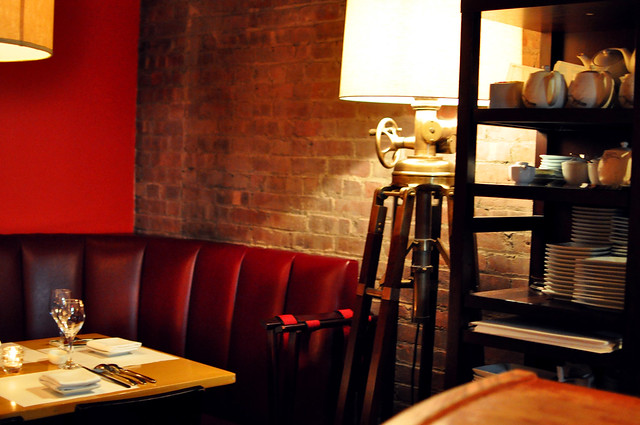

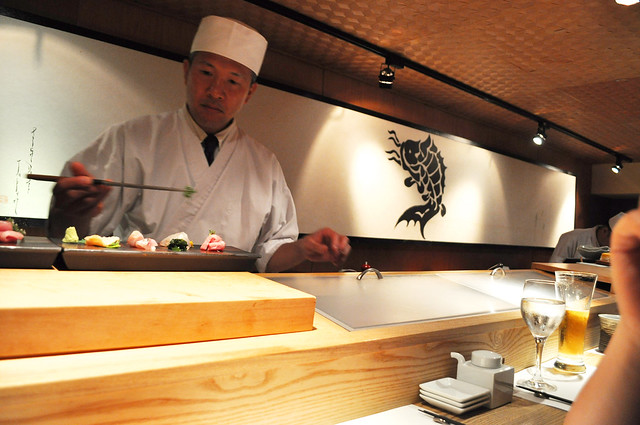



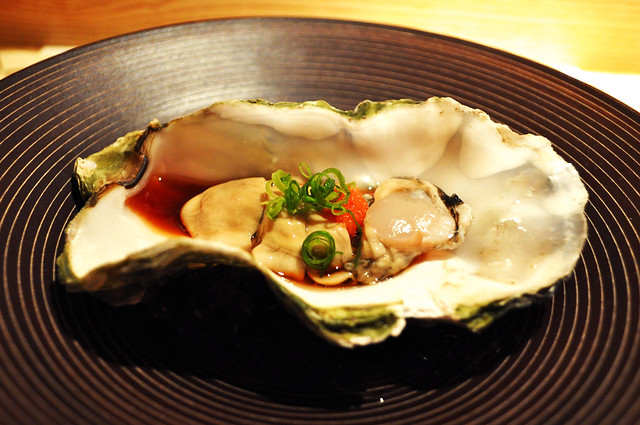

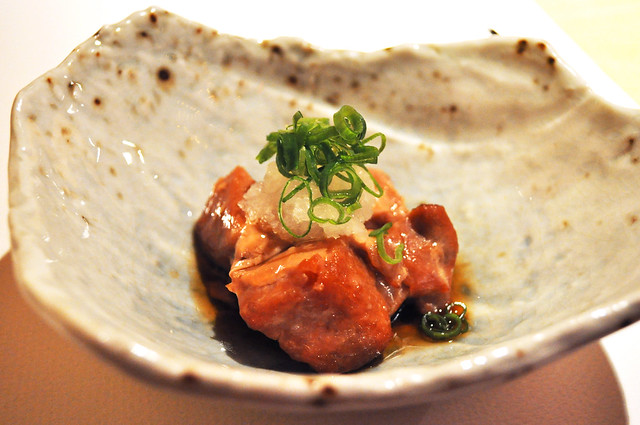
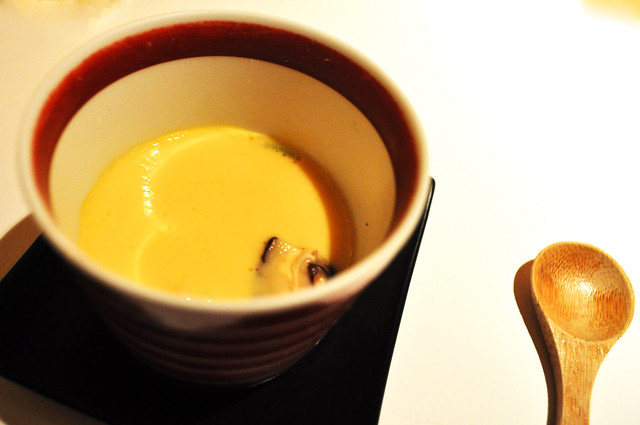


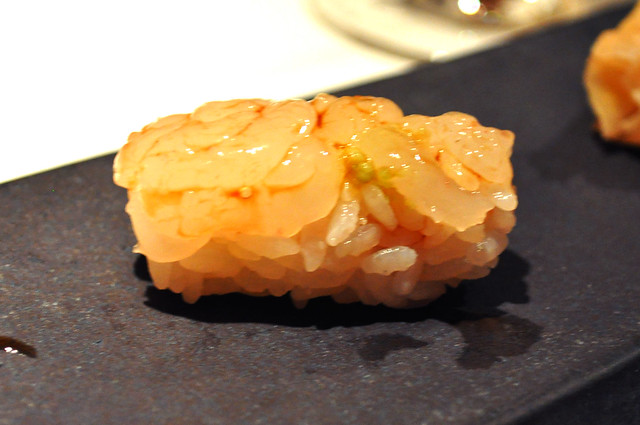



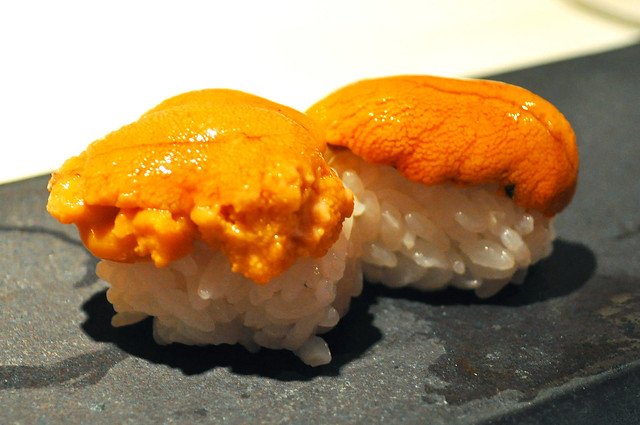
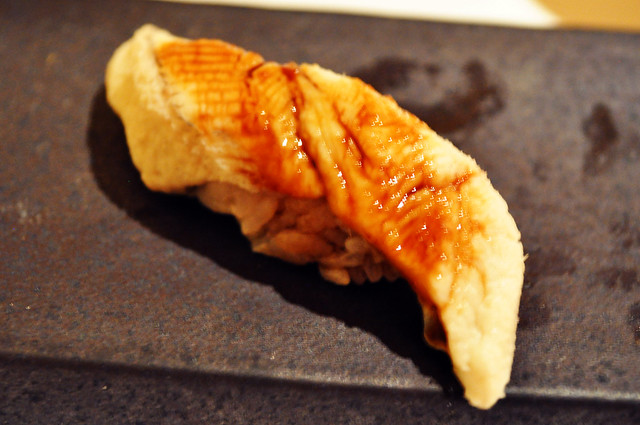
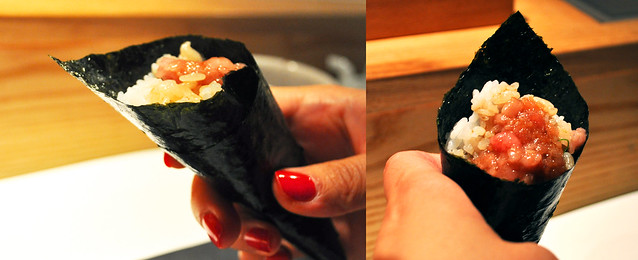




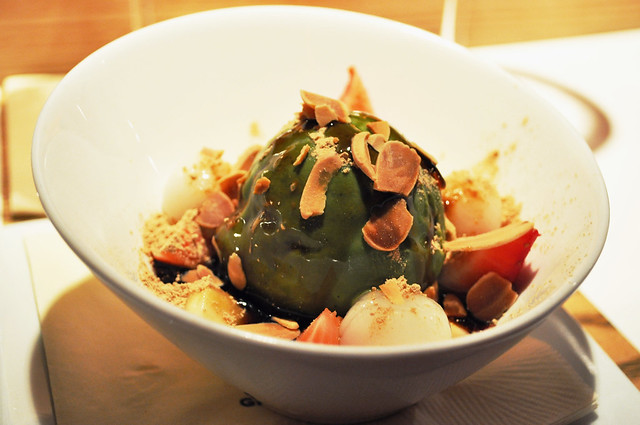
No comments:
Post a Comment